Tianjin University
High mechanical strength and long-term resistance to fibrous capsule formation are the two main challenges for implantable materials. Unfortunately, these two different attributes are not fused together, but compromised. Recently, Dianyu Dong of Tianjin University and Caroline Tsao and Professor Hsiang-Chieh Hung of University of Washington collaborated to integrate two weak zwitterionic hydrogels into elastomer-like high-strength pure zwitterionic water through "swelling" and "locking" mechanisms. Gel, thus reporting unique material categories. The related paper titled High-strength and fibrous capsule–resistant zwitterionic elastomers was published in Science Advances. These zwitterionic-elastomeric-networking (ZEN) hydrogels further show that they can effectively resist the formation of fibrous capsules after being implanted in mice for up to 1 year. This material with high mechanical properties and long-term fiber capsule resistance has never been available before. This work not only proves a class of durable and fiber-resistant capsule materials, but also provides design principles for zwitterionic elastomer hydrogels.
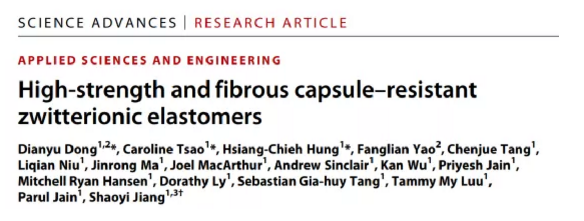
The author proposes a zwitterionic-elastomer-networked (ZEN) hydrogel (Figure 1A), which is achieved by integrating two weak zwitterionic hydrogels: pCB and poly(sulfobetaine) (pSB) . In this pCB/pSB ZEN hydrogel, pCB is a minor component, forming a tightly cross-linked network to generate elasticity, and pSB is the main component, forming a loose cross-linked network to provide viscosity. It is worth noting that the pCB network has high swellability and can integrate a large number of pSB networks, and the pSB network "locks" the entire hydrogel through strong intermolecular and intramolecular electrostatic interactions. A new mechanism that combines excellent swellability and "locking" effect enables ZEN hydrogels with high mechanical strength to be obtained using only pure zwitterionic components. The author further proved that three parameters (type, combination and composition of zwitterionic components) are the key to obtaining ZEN hydrogel. The pCB/pSB ZEN hydrogel has been shown to resist the formation of fibrous capsules implanted subcutaneously in mice for up to one year.
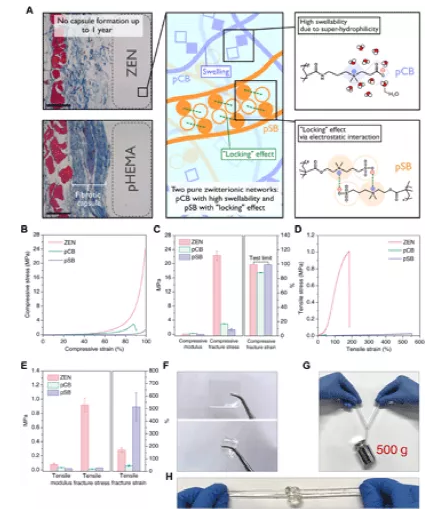
Figure 1 pCB/pSB ZEN hydrogel with high mechanical properties
Conventional hydrogels used in medical applications, such as poly(ethylene glycol) (PEG) and poly(2-hydroxyethyl methacrylate) (pHEMA), have relatively weak mechanical properties, with a compressive fracture stress range of 0.6 To 3 MPa. Traditional zwitterionic hydrogels, such as pCB, pSB, and poly(2-methacryloxyethyl phosphorylcholine) (pMPC) are also very weak, with a limit of about 3 MPa. In contrast, the pCB/pSB ZEN hydrogel is able to compress smoothly to 99% strain with a fracture stress of 22.3 MPa, and maintain its original shape after release (Figure 1, B and C). Similarly, pCB/pSB ZEN hydrogel has a large tensile strain of 169.9%, and its fracture stress is close to 1 MPa (Figure 1, D and E), which is comparable to biological tissues (such as blood vessels). The pCB/pSB ZEN hydrogel can be made into a variety of shapes and can maintain a wide range of deformations and then restore its original geometry (Figure 1, F to H).
In order to clarify the general design principles of ZEN hydrogels, the author studied the structure-property relationship between two zwitterionic networks: pCB and pSB. First, orthogonal compression experiments were performed on a series of hydrogels composed of three different pCB networks and seven pSB networks, and the monomer concentration and crosslinking agent ratio of each network were different (Figure 2, A to C ). The mass percentages of pSB and pCB components corresponding to the optimal mechanical strength are 95 and 5%, respectively, which makes pSB the main component and pCB the secondary component (Figure 2D). Due to the high swelling properties of the pCB component, a large amount of pSB components can be integrated. In addition, after the pCB/pSB ZEN hydrogel was immersed in water to swell to equilibrium, a key locking effect was observed (Figure 2E). The volume of the equilibrated pCB/pSB ZEN hydrogel is only slightly increased (~9%) compared to its prepared state, while the parent pCB hydrogel (1-4-0.1, monomer-crosslinking-initiator) is The volume increase is about 500%. Under the same orthogonal study (Figure 2F), it was observed that the volume of other pCB/pSB formulations also showed only a small increase, and the equilibrium water content (EWC) remained between 60% and 66%.
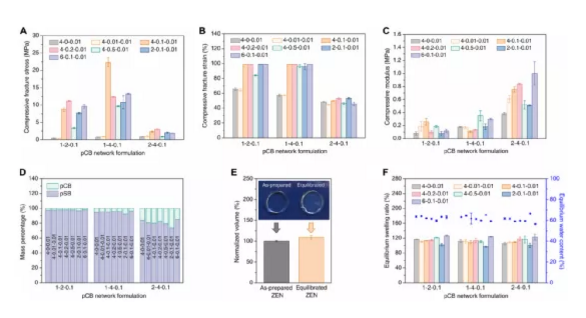
Figure 2 Mechanical and swelling properties of a series of pCB/pSB hydrogels
First, an orthogonal compression test was performed on the pCB/pCB hydrogel to test the effect when pSB is not the main component network (Figure 3, A, D and E). Unsurprisingly, without pSB as the main component network for locking, all pCB/pCB hydrogels showed a large volume increase after reaching equilibrium in water (Figure 3F), resulting in weaker mechanical properties. Among all pCB/pCB combinations, the highest fracture stress is only one-fifth of pCB/pSB ZEN hydrogel. In the pSB/pCB system (Figure 3, B, D, E, and F), where pSB is a secondary component network, since the hydrogel increases by 120% of its original size after reaching equilibrium, there is no locking effect. . The fracture stress is only about 1 MPa. On the other hand, in the pSB/pSB system (Figure 3, C to F), the locking effect was observed as expected, and the equilibrium volume increased slightly, about 7.9%.
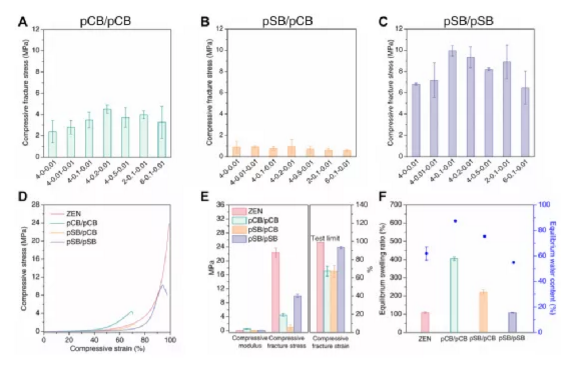
Figure 3 Basic design principle of ZEN hydrogel
One week after implantation, basophilic discoloration and obvious cell accumulation were observed at the tissue interface in direct contact with the pHEMA hydrogel, indicating an acute inflammatory response (Figure 4A). Since inflammation is known to trigger the recruitment of collagen secreting fibroblasts to encapsulate and separate foreign bodies, it is expected that the formation of an initial collagen layer will be observed in these mice after 1 week (Figure 4, B and C). By the fourth week of pHEMA hydrogel implantation, a dense and mature collagen capsule had been formed, which thickened further after 1 year (Figure 4, B and C).
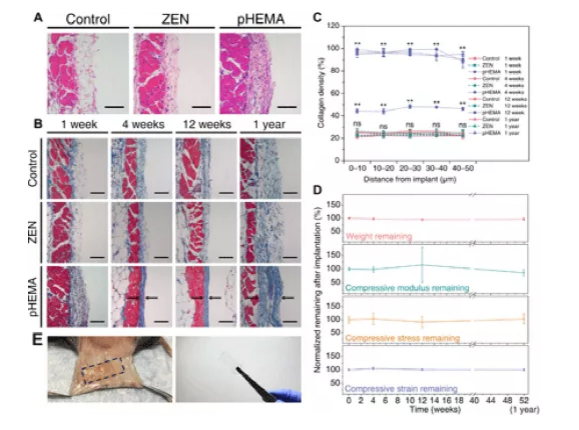
Figure 4 pCB/pSB ZEN hydrogel exhibits long-term fibrous capsule resistance and durability after subcutaneously implanted in mice for up to 1 year.
In contrast, after 1 week, almost no cells were observed at the interface between the tissue and the implanted pCB/pSB ZEN hydrogel (Figure 4A), similar to the negative control, indicating that they caused little or no acute inflammation . Derived from excellent anti-fouling performance. During the entire process of this study, the skin tissue adjacent to the pCB/pSB ZEN hydrogel did not show signs of inflammation, nor did it show any dense fibrous capsule formation, but a loose subcutaneous structure similar to the negative control skin tissue (Figure 4, B and C). In addition, the pCB/pSB ZEN hydrogel sample maintained its shape and was highly durable after being implanted for a full year without significant degradation and loss of mechanical properties (Figure 4, D and E). This indicates that ZEN hydrogel materials can maintain long-term fiber capsule resistance and durability in the body.
The author reports a "ZEN" hydrogel that exhibits a unique combination of mechanical strength and long-term fibrous capsule resistance. The key feature of ZEN hydrogel is that it is composed of two different pure zwitterionic networks-a tightly cross-linked secondary component network with high swellability and a loosely cross-linked main component network that exhibits a key locking effect. It is found that pCB/pSB ZEN hydrogel exhibits excellent elasticity under a wide range of deformation, reduces the formation of fibrous capsules, and remains stable when implanted subcutaneously in mice for up to 1 year without degradation or mechanical strength reduction. The author envisions the durability and fiber capsule resistance of ZEN hydrogels, providing a new way to achieve the long-term goals of implantable materials, such as cartilage replacement, tissue repair and catheters.
Paper link:
DOI: 10.1126/sciadv.abc5442
18915694570
Previous: Nankai University Huan


